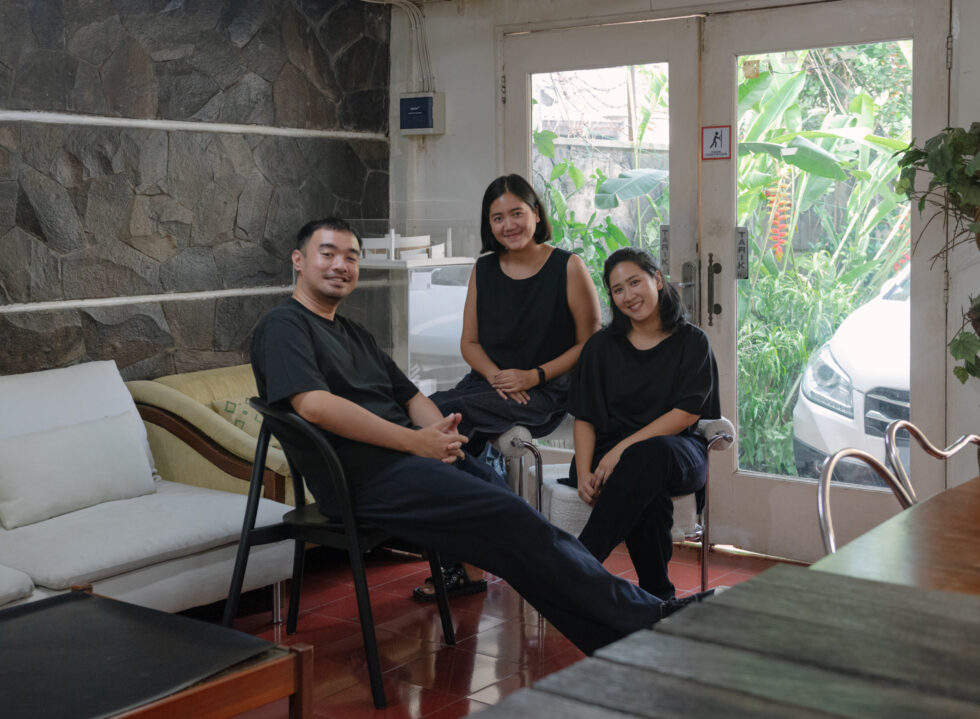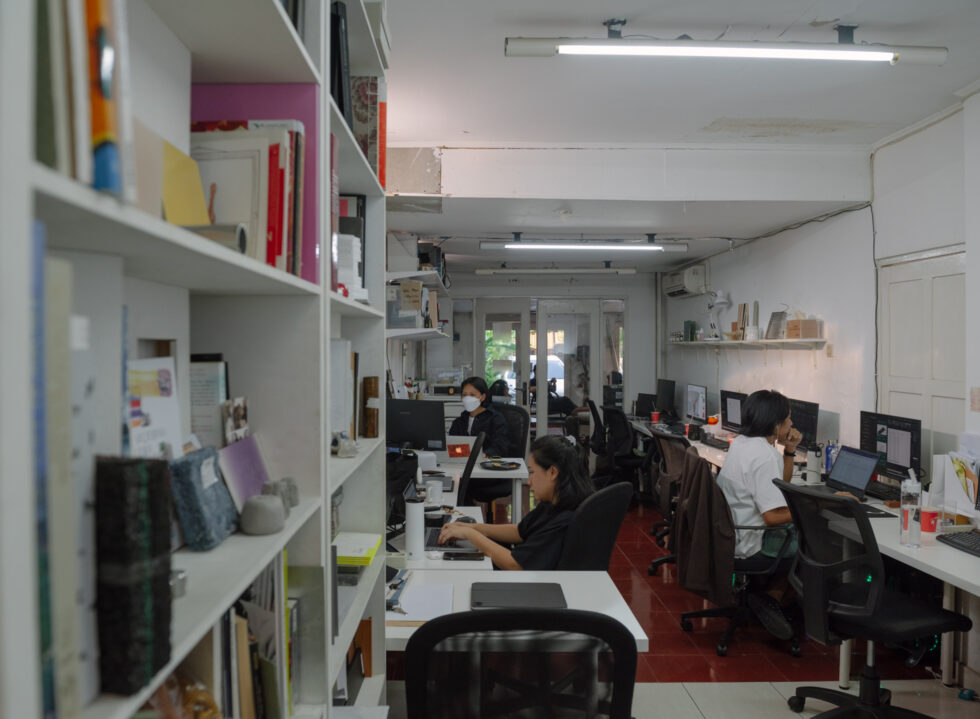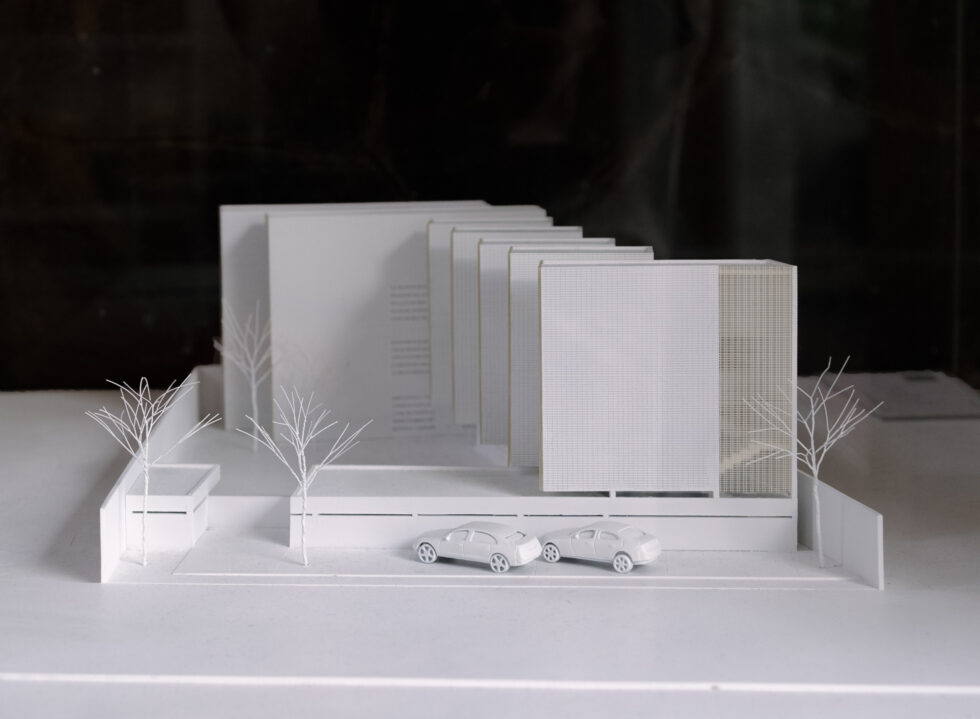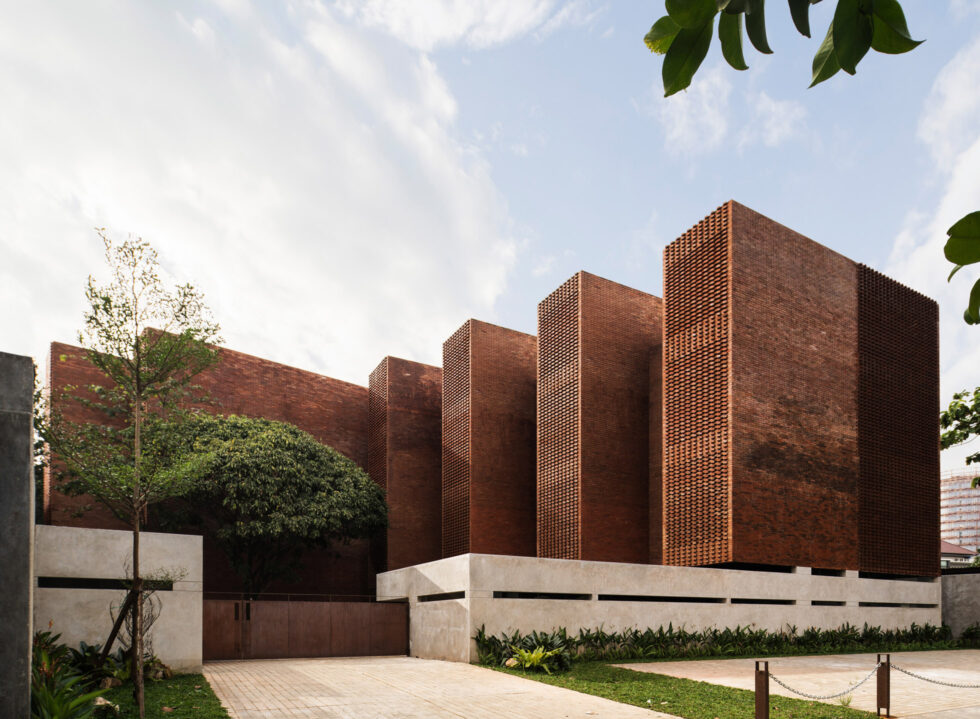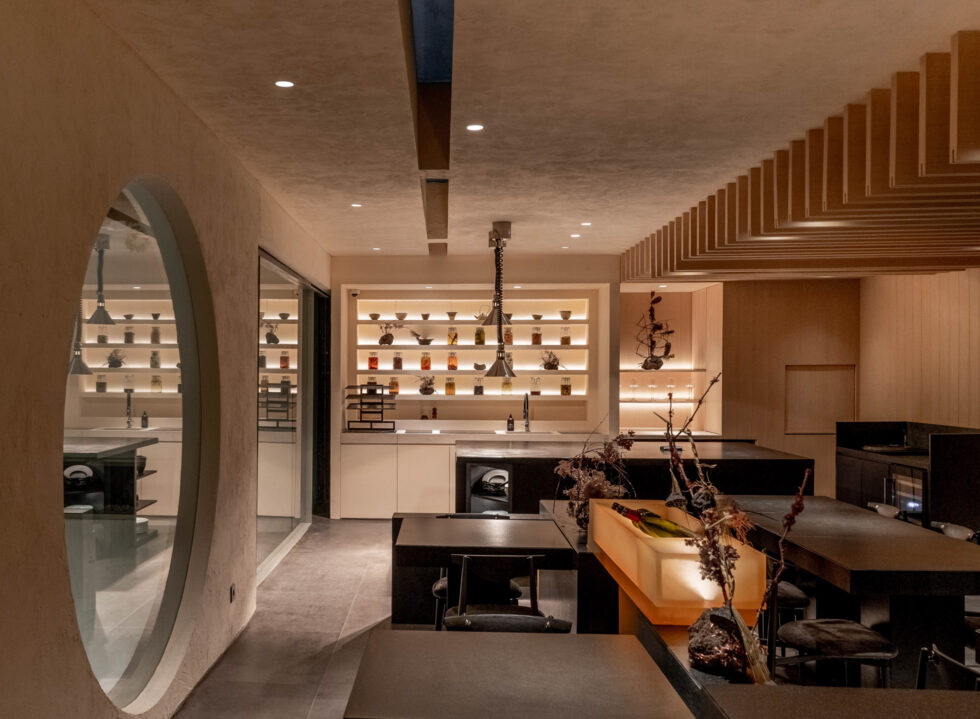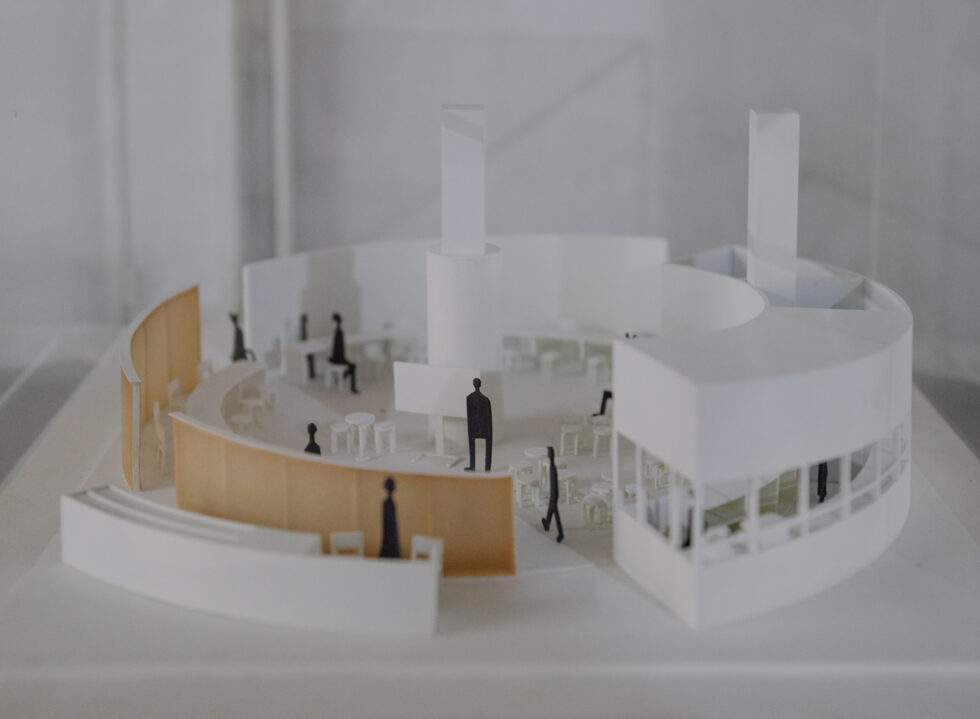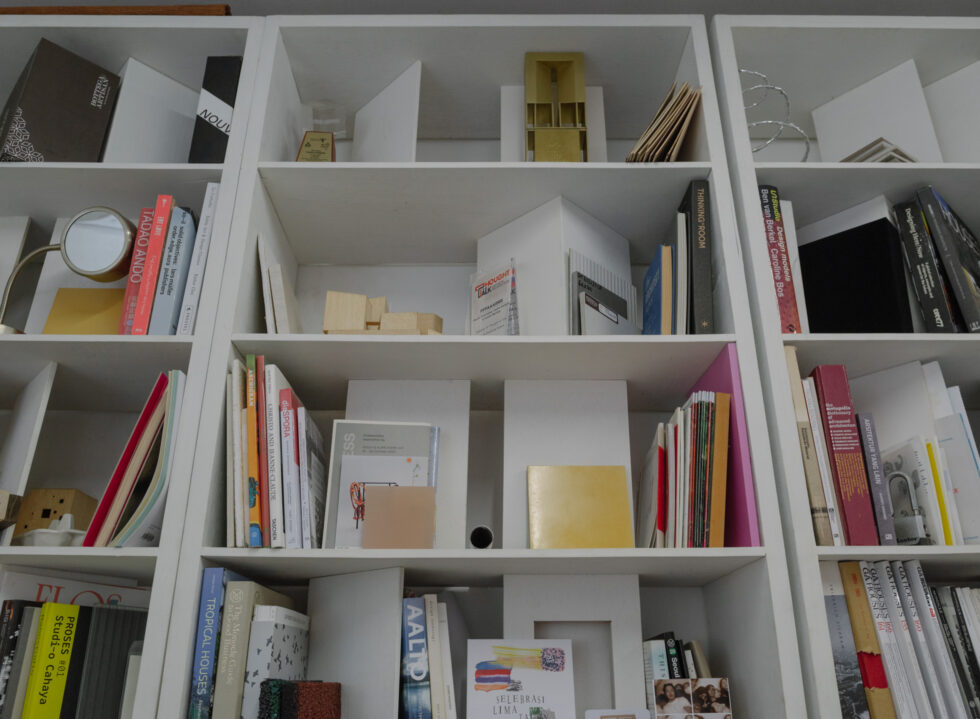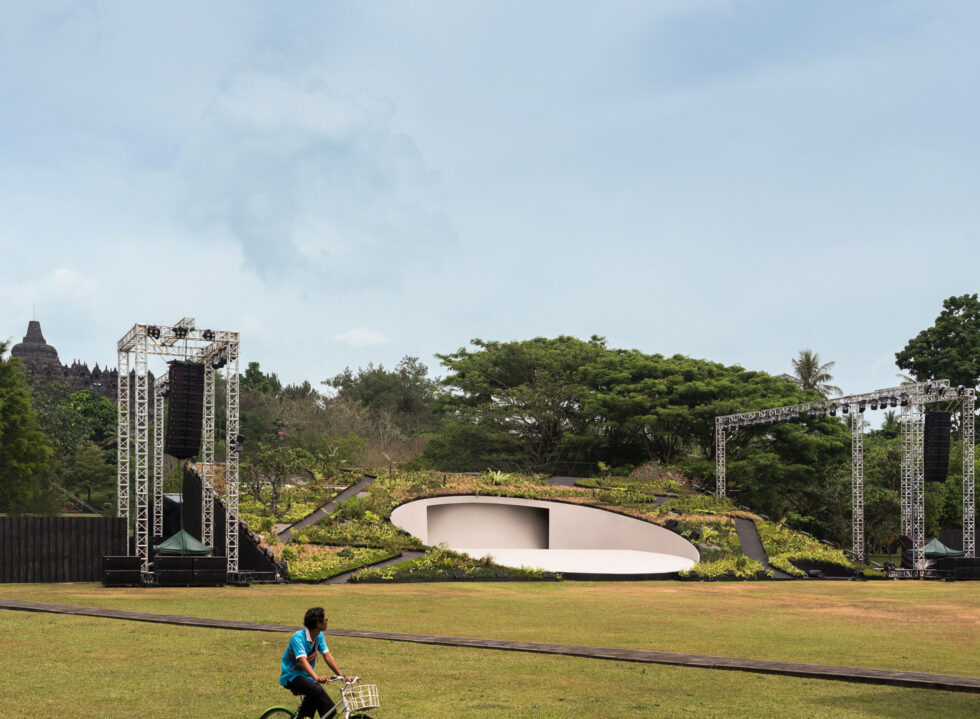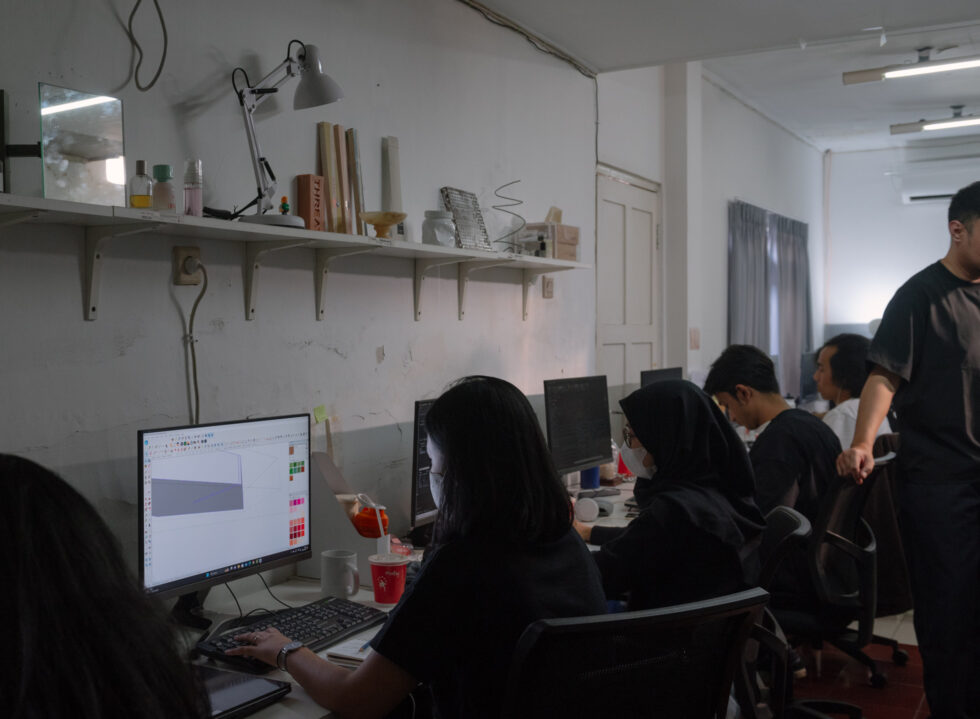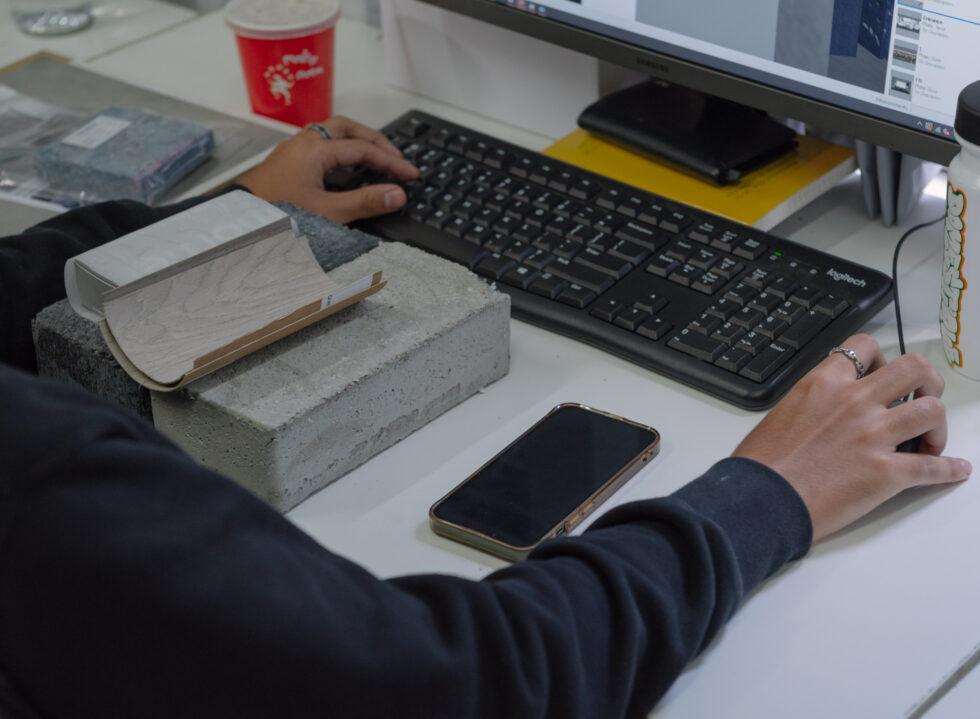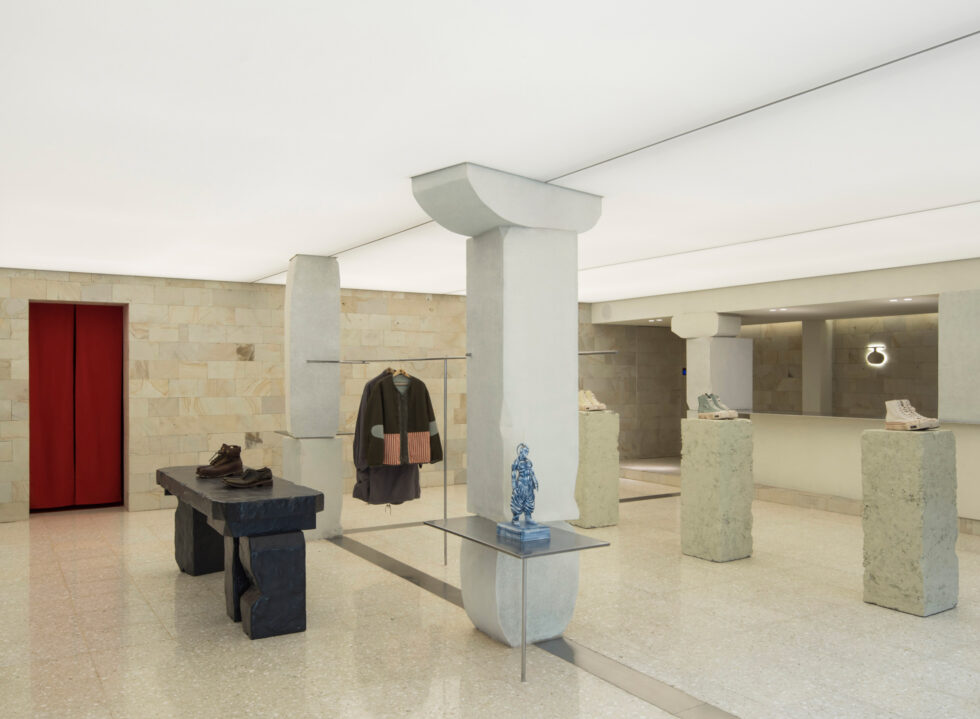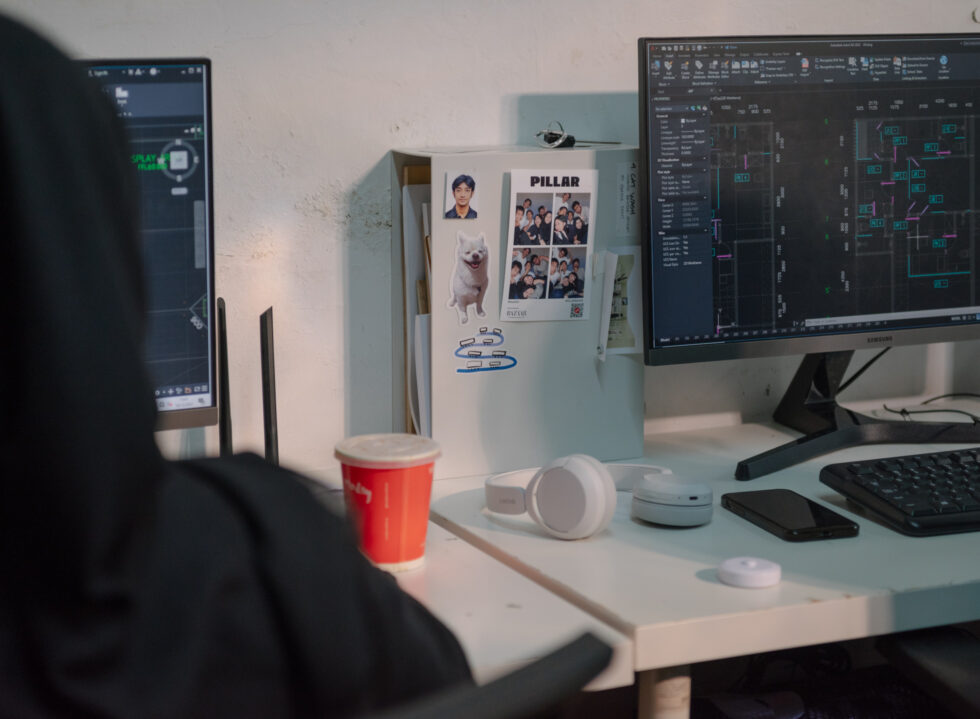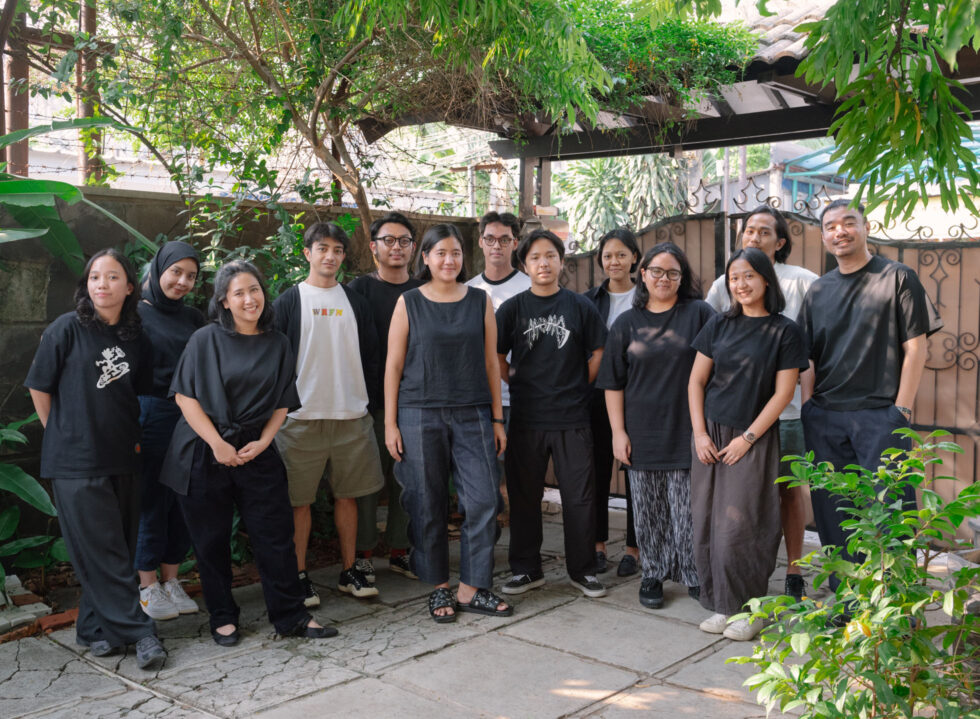“Many people still think of architecture strictly as buildings and structures. We want to separate ourselves from that,” shared Fauzia Evanindya, who founded the design studio FFFAAARRR along with Andro Kaliandi and Azalia Maritza in 2017. Fueled by this idea of pushing past architectural currents, their practice has since materialised into homes for the city’s creative ventures, such as retail boutique TEMPL, talk-of-the-town restaurant SU MA, and the stylish kos slash communal house, Bauen Haus.
The trio first met while studying at UI (Universitas Indonesia), often pairing up for group slash freelance projects up until graduation, where soon after, they began working under different mentors in the industry; Fauzia at andramatin Studio, Andro at Nataneka, and Azalia, also fondly known as Ica, at Aboday.
“These experiences moulded a lot of our understanding and outlook on design. Each of these studios has its signature approaches and thinking systems, which we try to develop into our own at FFFAAARRR,” observed Fauzia. “It’s not something we often talk about, but I think we share the awareness and understanding of the importance of embracing our inner child when we design,” Ica added.
Talking with the comfort of siblings who know what the other is going to say, they exude a familiarity and ease true of longtime friends. “A touch point for us is how we see the different directions architecture can go, unrestricted to one scale, typology or point of view to create something more fluid and open-ended,” Fauzia explained.
“Many people still think of architecture strictly as buildings and structures. We want to separate ourselves from that.”
“Back then, it still wasn’t the norm for architects to work on projects outside of ‘buildings’, such as exhibitions, fashion shows and events. That’s something we’d like to continue to make space for through our practice,” Andro added.
One of their earliest projects was Bauen Haus in Lebak Bulus. From the outside, the 1200-square-metre communal house appears like towers of floating terracotta wafers, its bold colour offset by the exposed concrete walls of its corridors and pillars, giving the feel of a stylish Bed and Breakfast rather than the standardised kos.
“I think it’s helpful that none of us have experienced staying at a kos before, we were able to break away from the confines of the typical layout and free to explore different compositions,” observed Andro. A departure from template room sizes, the bedrooms unfold as a composition of angular, geometric lines. The first floor opens to a courtyard and communal area that doubles as a co-working space, with brick lattices leaving gaps for the sunlight to bathe the open-air pockets with a golden glow at specific times of the day.
This interplay with nature is also a recurring theme in their portfolio, showcased in the Lumbini Stage they constructed for Indonesia Bertutur 2022, a cultural festival held in Magelang that brought over 900 performers and a crowd of 15,000. As opposed to the typical stage design that features a raised platform, FFFAAARRR blurs the line between the stage and the surrounding green field, giving the impression that the set emerges from the soil to form an upward slope that also incorporates live greeneries.
Fauzia, Andro and Ica distance themselves from a formulaic approach, choosing to leave room for creative impulses and surprises.
The centre of the stage is a semi-sphere that generously reveals the Borobudur temple in the background; a majestic view that was exemplified by the festivity of the performers and traditional dances taking the stage. “We wanted to honour Borobudur and its surroundings in our own way. It was one of the first events held after the pandemic and it felt very warming to see people coming together, sitting on woven mats on the grass and enjoying the performances,” conveyed Andro.
Whether it’s working on residential projects or exhibitions such as the London Bookfair in 2019—where they designed a ripple-shaped structure to showcase 400 literary works—to installations for fashion shows including Studio Moral’s 10th anniversary, the three of them distance themselves from a formulaic approach, choosing to leave room for creative impulses and surprises. As Ica described, “Our design style is that we like to make our lives difficult. In a sense that, maybe there’s an easier way to do this, but we always push for other possibilities we can test out and explore.”
It’s a point of view that Fauzia, Andro and Ica also nurture within the growing FFFAAARRR team. Overseeing 10 designers, they encourage their team to develop a critical eye through constant discussions, feedback sessions, as well as architectural trips. “Sometimes we don’t even look at the buildings, but we try to absorb the products, how they’re made, the spatial experience and narrative behind it,” shared Andro.
“Beyond the physical, it’s important for us to get the character right. The designs should serve as an extension of these brands and individuals, bearing marks of their personality and quirks,” expressed Fauzia. As for FFFAAARRR, the three describe the studio like a kid at a theme park waiting in line for a roller coaster ride with an oversized lollipop in hand. Playful, curious, and excited, just like the trio.
